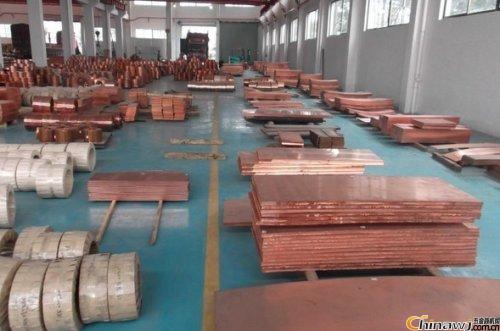Bronze with tin as the main alloying element. The tin content is generally between 3 and 14%, and is mainly used for the production of elastic components and wear parts. The tin content of the deformed tin bronze does not exceed 8%, and elements such as phosphorus, lead, and zinc are sometimes added. Phosphorus is a good deoxidizer and improves flow and wear resistance.
Tin bronze: Bronze with tin as the main alloying element. The tin content is generally between 3 and 14%, and is mainly used for the production of elastic components and wear parts. The tin content of the deformed tin bronze does not exceed 8%, and elements such as phosphorus, lead, and zinc are sometimes added. Phosphorus is a good deoxidizer and improves flow and wear resistance. Lead in tin bronze improves machinability and wear resistance, and zinc addition improves casting performance. The alloy has high mechanical properties, anti-wear performance and corrosion resistance, easy cutting, good brazing and welding performance, small shrinkage coefficient and no magnetism. Bronze bushings, bushings, diamagnetic components, etc. can be prepared by wire flame spraying and arc spraying. Dimensions are Ф1.6mm and Ф2.3mm. It has high strength, corrosion resistance and excellent casting properties and has been widely used in various industrial sectors for a long time. Domestic tin bronze is divided into QSn4-4-2.5 and QSn4-4-4 according to the chemical composition.
Tin bronze processing technology:
The tin content of processed tin bronze is generally not more than 8%. Under production conditions, copper-zinc alloys are in a non-equilibrium crystallization process. Table 1 shows that when the alloy is in non-equilibrium crystallization, the solidification temperature range is enlarged, the α phase region is reduced, and the δ phase is too late to decompose. In the cast tin bronze, α + (α + ε) structure is generally not present, but α + (α +δ) organization. (α + δ) is an eutectoid, δ is a hard and brittle phase, and the plasticity of the alloy is impaired when the content is large.
Table 1: Phase diagram of Cu-Sn alloy
Tin bronze features:
1. Tin bronze has a large solidification temperature range (up to 150~160°C), and dendritic segregation is serious; no concentrated shrinkage cavities are formed during solidification; volume shrinkage is small. Castings are less dense.
2. When the alloy solidifies, it is prone to reverse segregation.
3. In liquid alloys, tin easily reacts with oxygen to form hard and brittle inclusions, which are present in the alloy and reduce the mechanical properties of the alloy. Sufficient deoxidation during smelting.
4, tin bronze segregation is serious, uniform annealing should be carried out before plastic processing. A two-phase alloy containing a high tin and a high temperature (α + β) state, because of the high temperature plasticity of the β phase, can be subjected to hot plastic processing.
5. Tin bronze has little sensitivity to overheating and gas, and can be welded and brazed well. The impact does not produce sparks, no magnetism, cold resistance, and extremely high wear resistance.
Http://news.chinawj.com.cn
 Editor: (Hardware Business Network Information Center) http://news.chinawj.com.cn
Editor: (Hardware Business Network Information Center) http://news.chinawj.com.cn 
Top Chests and Roller Cabinets get different sizes of 27", 37", 42" and 56".
Top Chests and Roller Cabinets
Rolling Tool Storage,Drawer Roller Cabinet,Roller Cabinet Tool Chest,Heavy Duty Roller Cabinet
Changzhou Xingsheng Tianhe Electric Appliance Co., Ltd , https://www.roller-tool-cabinet.com
![<?echo $_SERVER['SERVER_NAME'];?>](/template/twentyseventeen/skin/images/header.jpg)